For decades, Aston Martin DB5 serves as the prime example of how British engineering and Italian design are an automotive match made in heaven. However, despite being one of the finest Aston models, this legendary model serves as the first globally-recognizable automotive cultural icon, being featured in so many James Bond movies. The DB5 was and still is the epitome of style, refinement, and sophisticated British charm. At the same time, a very serious GT model capable of jumping continents at (then) incredible speeds. Knowing that generations of car enthusiasts grew up playing with DB5 toy cars and seeing them on the silver screen, it is easy to understand how this iconic car is so in demand by collectors. Here is its incredible story.
Evolution
Although Aston Martin was established in the early 20th century, the company as we know it today was, in fact, born in 1947, when David Brown Limited bought the company and invested heavily in reconstruction and modernization. It marked the beginning of a new era of new technology, new models, new customers, and new racing success like winning the legendary 24 Hours of Le Mans in 1959. After the DB4 proved to be a hit with the customers, the company needed a successor that could keep up with Ferraris and Maseratis of the time but still offer a bit more refinement and comfort than competitors. The solution was simple but effective in improving the DB4 concept in every way, further enhancing the design, technology, and performance and creating the ultimate Gran Turismo two-door model of the 1960s.
The DB5 was introduced in 1963, using a DB4 platform but new engine, technology, and features. However, the most striking visual feature was its design, and DB5 had similar cues to DB4, like round headlights and a semi-fastback profile. Still, the overall silhouette was much refined, sportier, and a bit lower. The design work was performed by the famous Carrozzeria Touring from Milan and featured its famous Superleggera construction process. In order to make the body as light as possible, Italian artisans first created a skeleton made of steel wires on which thin aluminum panels were mounted.
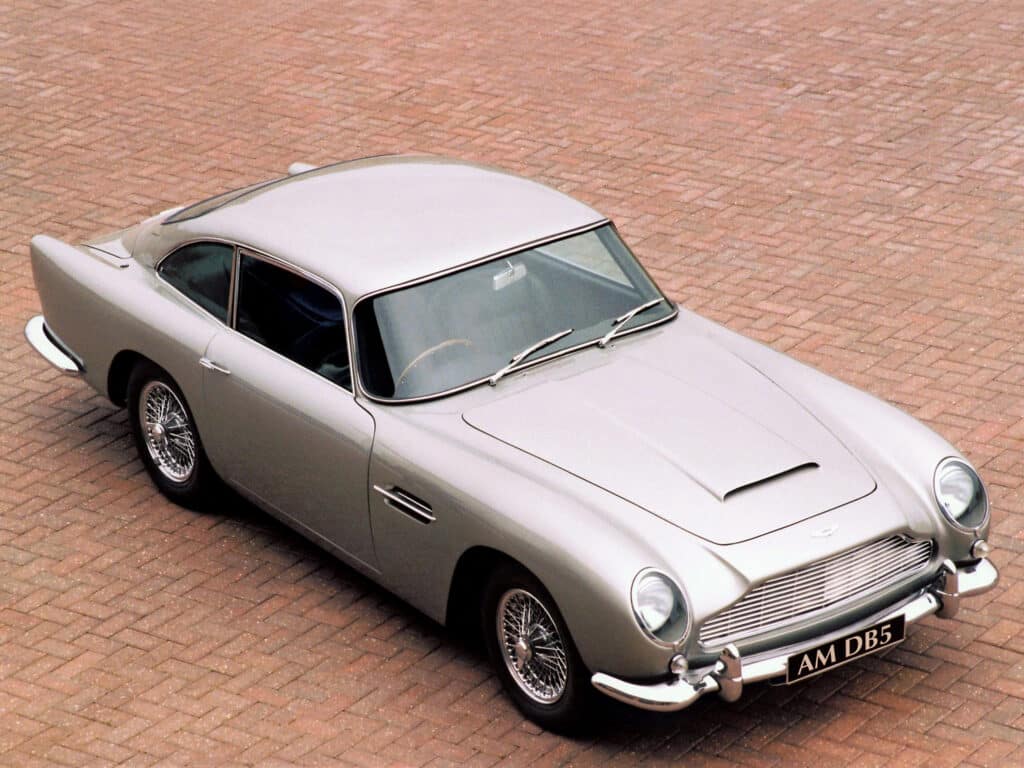
The heart of the DB5 was its magnificent straight-six engine which featured twin overhead camshafts, a very advanced design for the early ‘60s. With 4.0-liter displacement and triple SU carburetors, this all-aluminum unit delivered 282 hp, propelling the earlier models to 0 to 60 mph at around 8 seconds and a top speed close to 150 mph (240 km/h). Those were very impressive numbers for the time, and even today, well-sorted DB5 can happily cruise the motorways at high speeds. The early cars used the 4-speed manual transmission with overdrive, but later models gained a 5-speed ZF box, improving driving dynamics. Customers who preferred the automatic had an option of a 3-speed Borg-Warner box which improved comfort but slightly reduced the overall performance. The rear front suspension was independent but at the back, the DB5 had live rear axle, very common solution for the period.
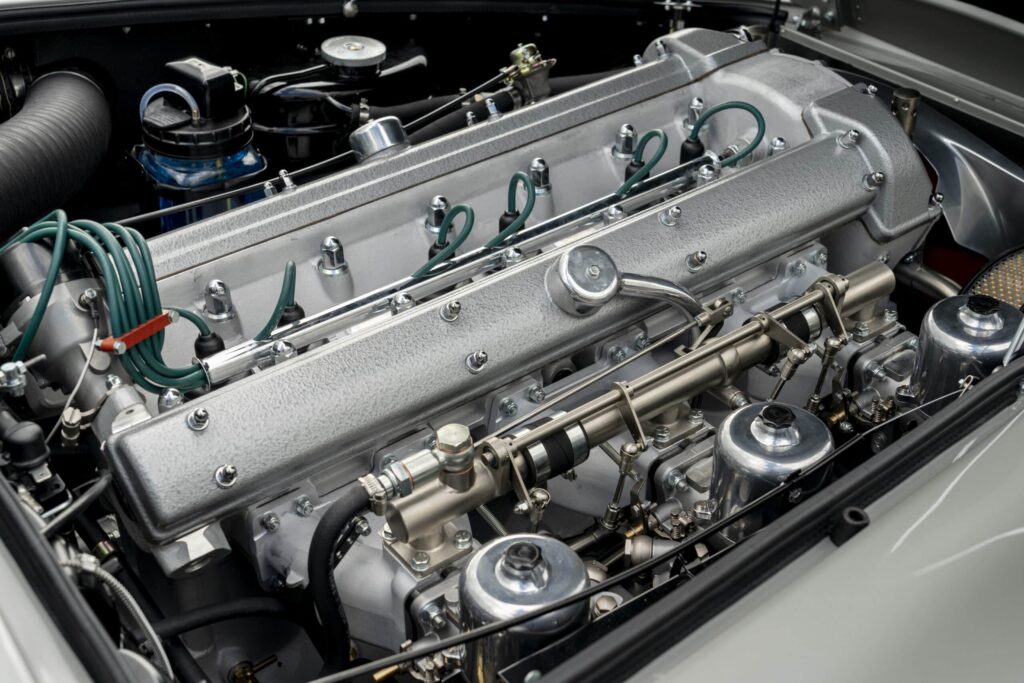
When it was released, the brand new Aston Martin DB5 was priced at 4,282 pounds or around $12,000. That sum was enough to buy you a house in the suburbs in those days. Still, even with such a high price tag, the DB5’s performance, luxury allure, and sheer beauty attracted many buyers, and the company was swept with orders from wealthy enthusiasts.
The level of luxury and comfort justified the high price that DB5 had as standard. Every model was delivered with power windows, leather interior and reclining seats, wool carpeting, wood dash, and wire wheels with air conditioning as an option. Of course, as always with Aston Martin cars, the DB5 was hand-built which added alure of exclusivity to this model.
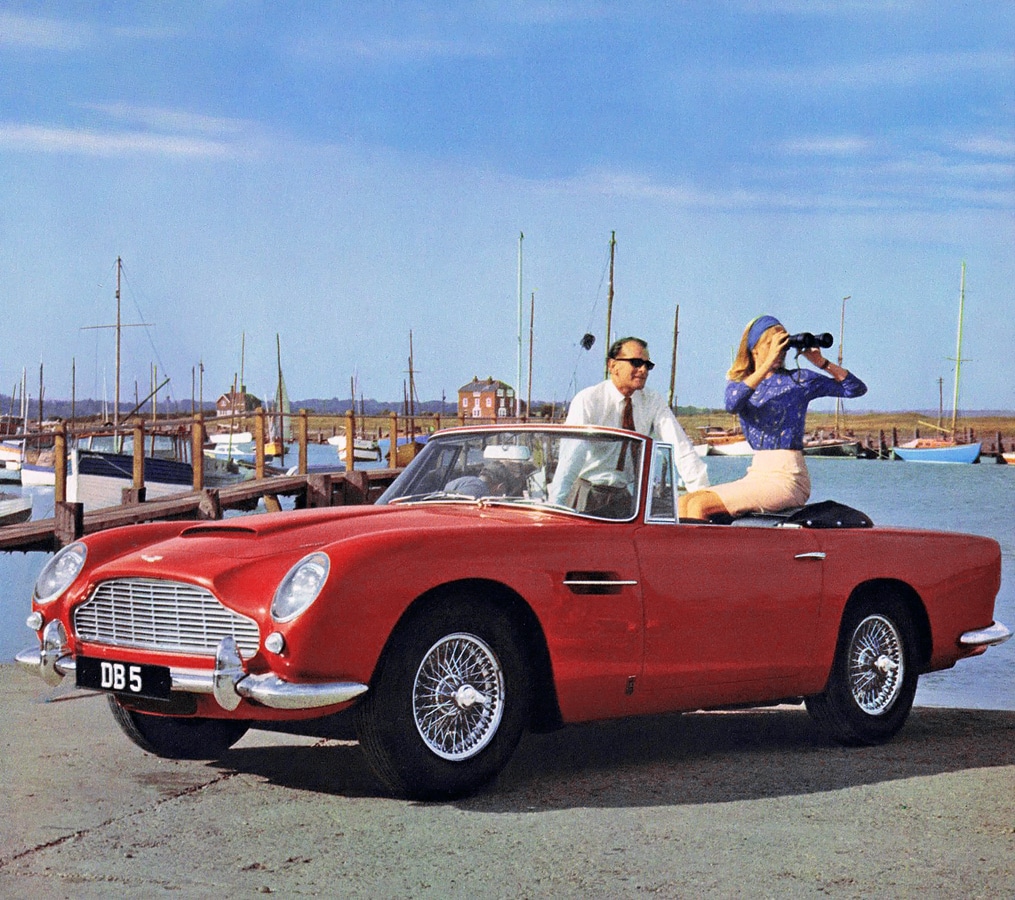
Even though the new DB5 was quite capable of fighting the competitors from Italy, Aston soon introduced the ultimate performance version called the Vantage. With a larger intake, different cam profile, and some other tweaks, the DB5 Vantage was capable of producing 325 hp and getting to 60 mph in just 6.5 seconds. Reasonably more expensive and a bit harder to live within everyday use, this version was limited to only 65 examples produced between 1963 and 1965. Owners reported that Vantage models were a bit more nosier, had higher rev capacity and consumption, along with improved performance.
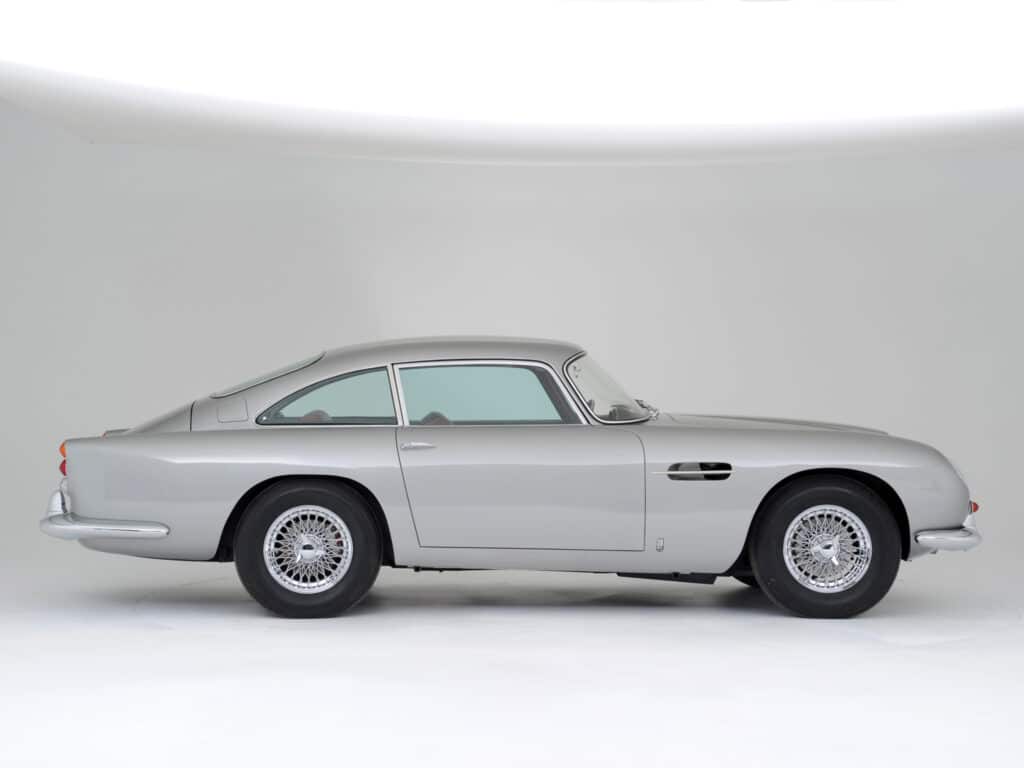
When the DB5 was released in 1963, Aston Martin didn’t have plans for a convertible version but soon requested such a design from Carrozzeria Touring in Milan. In those days, open-top Gran Turismo models were very popular. Since the DB5 was one of the best available, it was only logical that demanding customers get an alternative to the closed coupe. The DB5 convertible was available in late 1963, and only about 123 examples were constructed, of which only seven had a desirable Vantage performance pack installed. Those cars are now incredibly rare and valuable pieces of Aston Martin history.

Interestingly, the DB5 wasn’t only available as a coupe or convertible but also as a Shooting Brake, a unique-looking two-door station wagon. This body style was popular with discriminating enthusiasts who liked to go hunting with their sports cars. With an extended roofline and bigger luggage area, the DB5 Shooting Brake was convenient, although not the most ecstatically pleasing model of the series. Only about 12 cars are known to be made, most of them actually bodied by Aston’s bodywork specialists, not by Carrozzeria Touring itself.
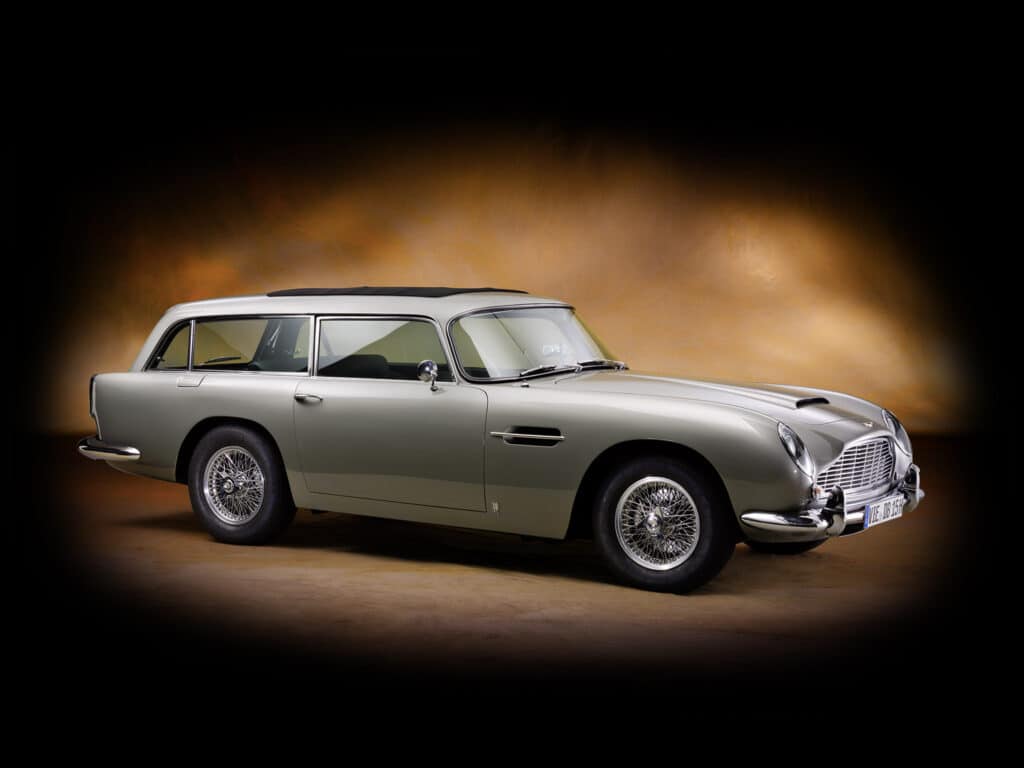
The Aston Martin DB4 had a remarkable competition career, but the company never intended for the DB5 to go racing, even though it had more power and performance. Aston Martin’s board realized that the racing program was expensive and that their resources should be better directed in the production of the road-going examples. We can consider this a wise decision since the mid-60s were times of significant technology changes, and DB5 had a front-engine/rear-drive layout that slowly went out of fashion. Even though the DB5 didn’t race, it didn’t diminish Aston’s reputation as a sports car brand of the highest order.
The DB5 production lasted only three model years (from 1963 to 1965), during which time, exactly 1,059 cars were constructed, including convertibles and Shooting Brake conversions. Even though the DB5 was soon replaced by similar DB6 and more advanced DBS models, it has remained popular and in demand by the collectors ever since. The combination of everlasting looks and a capable drive train meant that driving DB5 was an unforgettable experience. Interestingly, in 2020, Aston Martin announced that it would be building a very limited run of 25 “re-creation” cars – factory-built replicas with few improvements for modern-day use. Of course, all 25 cars were sold out immediately after the announcement.
The James Bond Connection
Although the DB5 has an impressive list of celebrity names who enjoyed its charms over the years, one is particularly interesting since it represents probably the best product placement in popular culture.
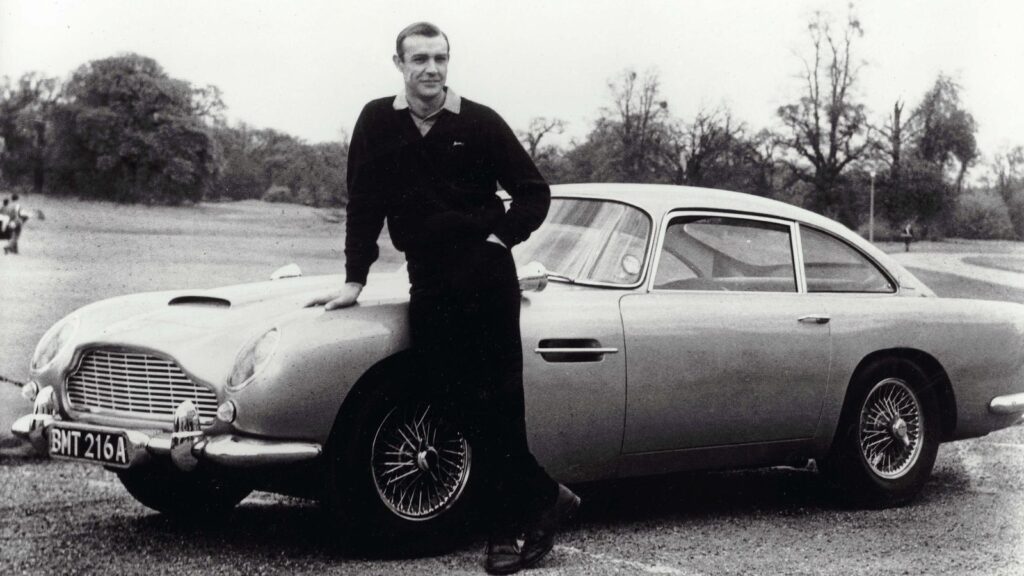
In 1964, producers of “Goldfinger” approached Aston Martin with a request to feature a new DB5 as personal transportation of Her Majesties’ Secret Agent. The company delivered four semi-prototypes for shooting and didn’t expect much from that collaboration. However, due to excellent camera work and directing, the Goldfinger chase became one of the best moments of the James Bond saga and entered the history of cinematography. The James Bond character was just what Aston needed to personify an ideal customer for DB5, and producers needed a perfect car to accompany their character in his adventures. The DB5 became so synonymous with the likes of James Bond that it was featured six more times, even in the latest movie called “No Time To Die.” Of course, such incredible cultural significance means that DB5 is an invaluable piece of automotive and cinematographic history and heritage.





